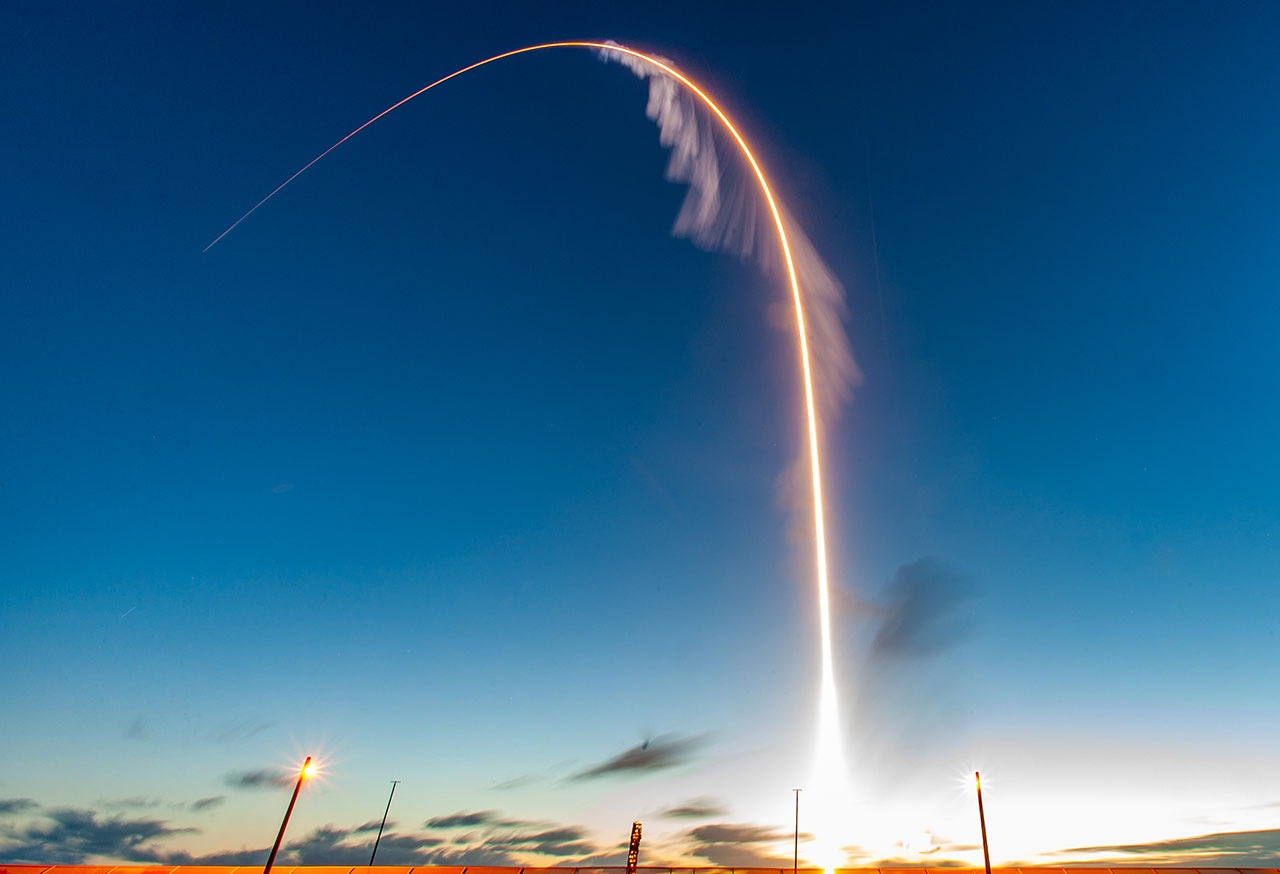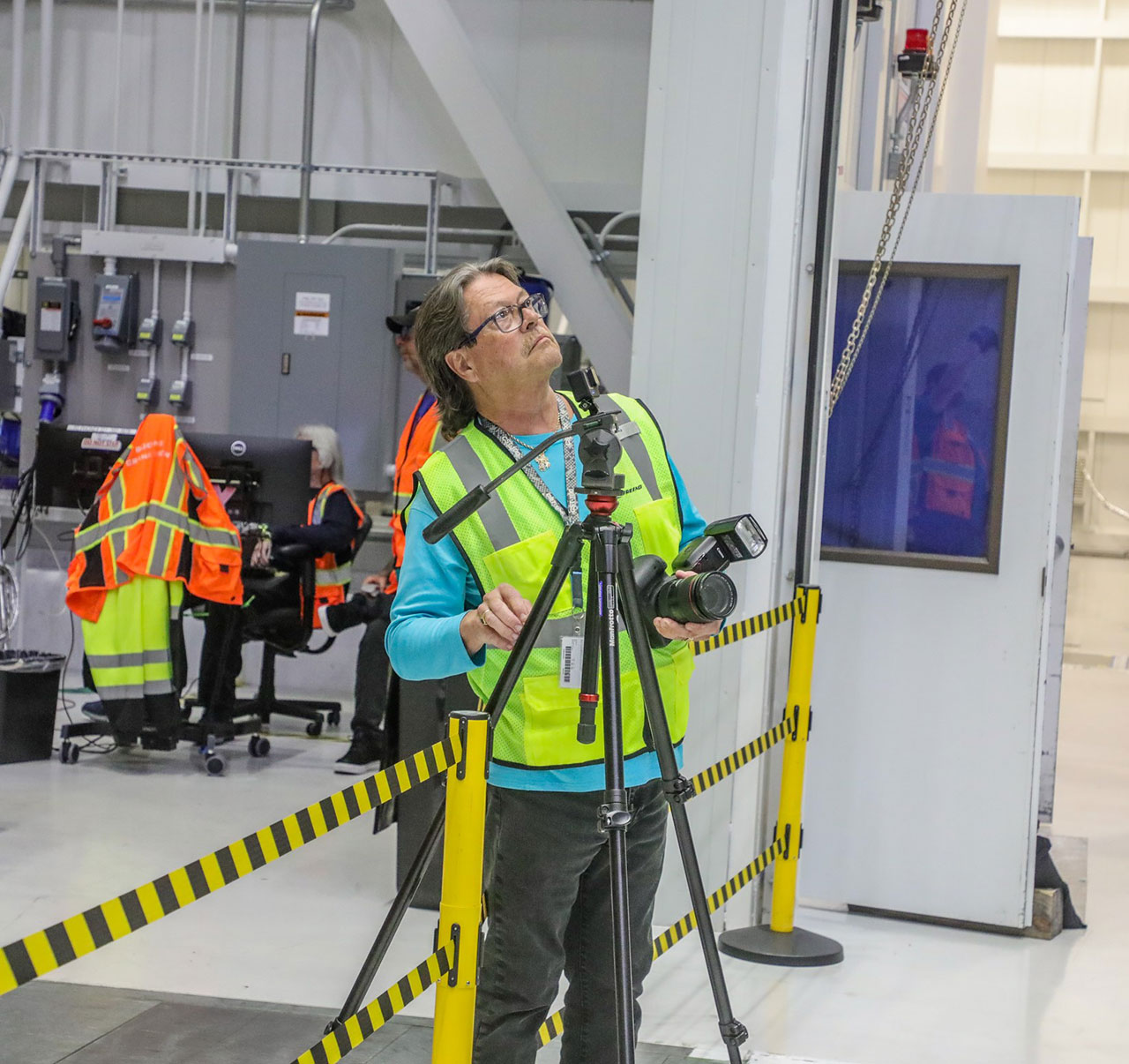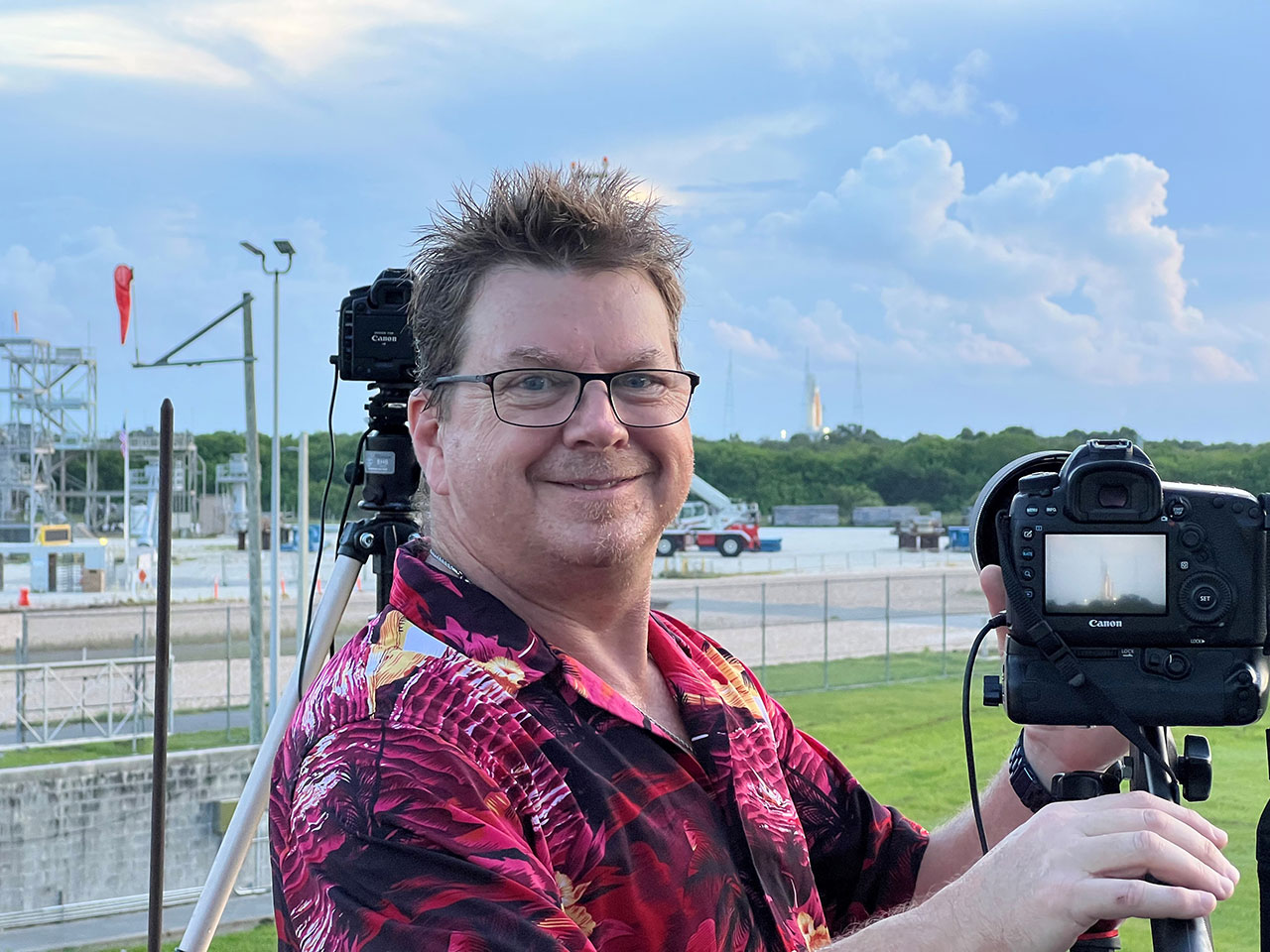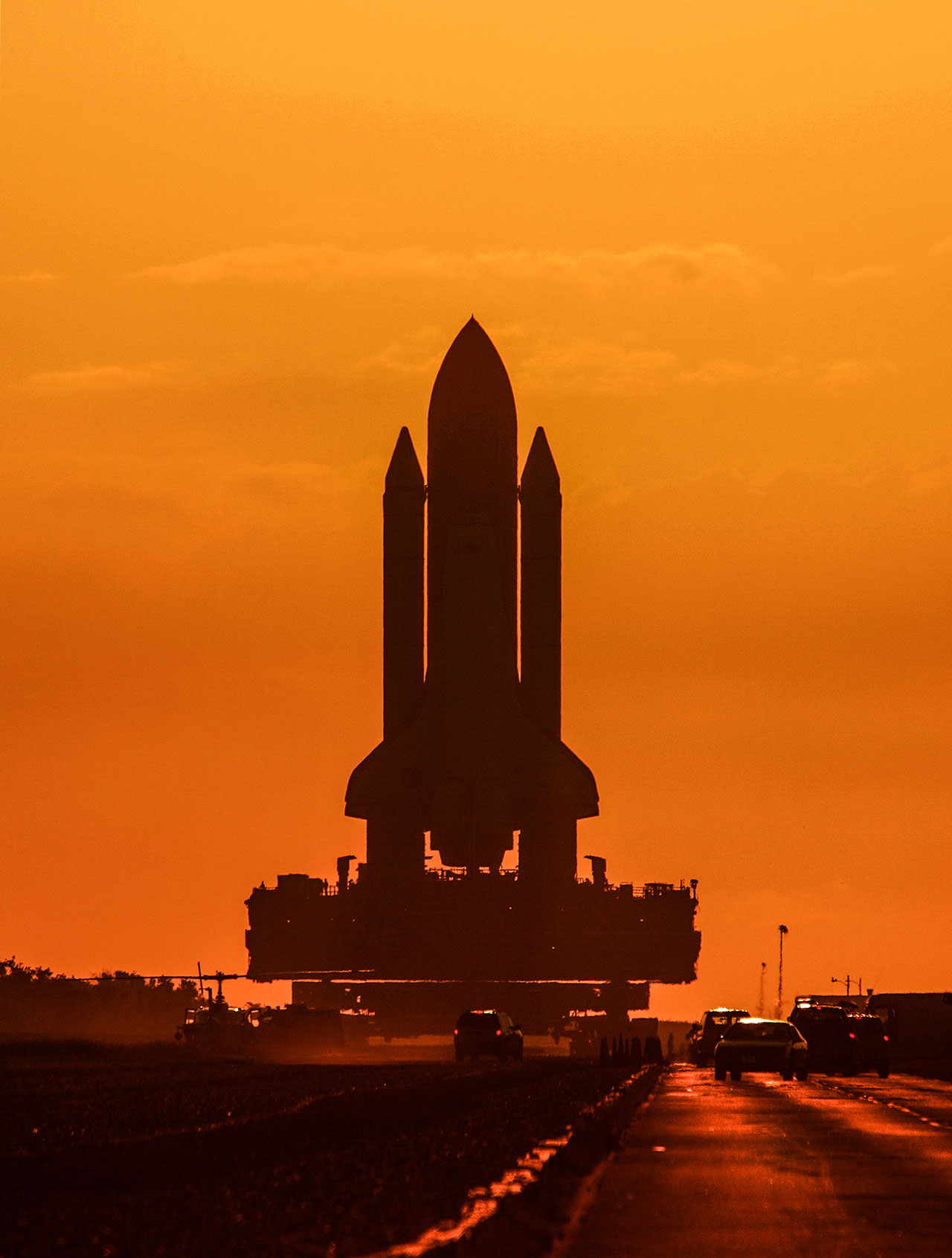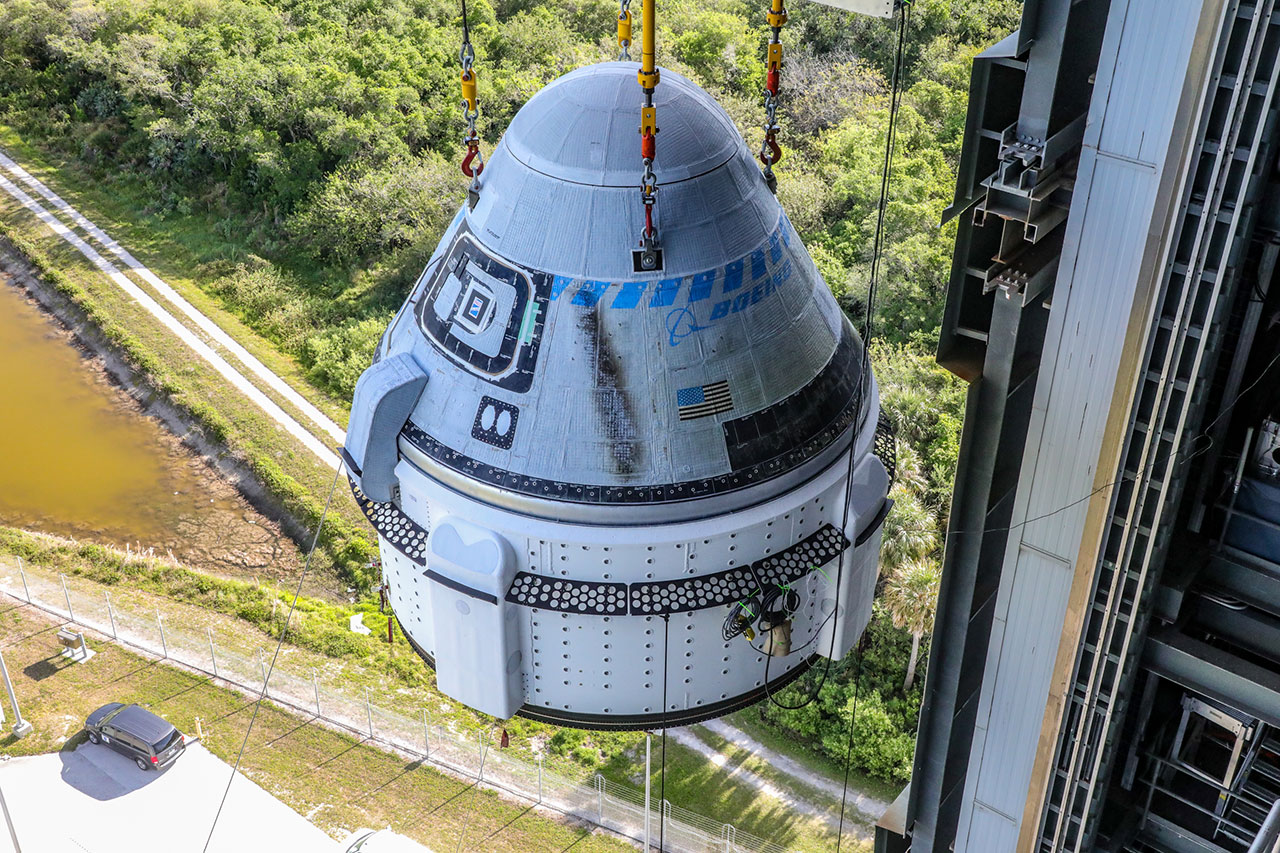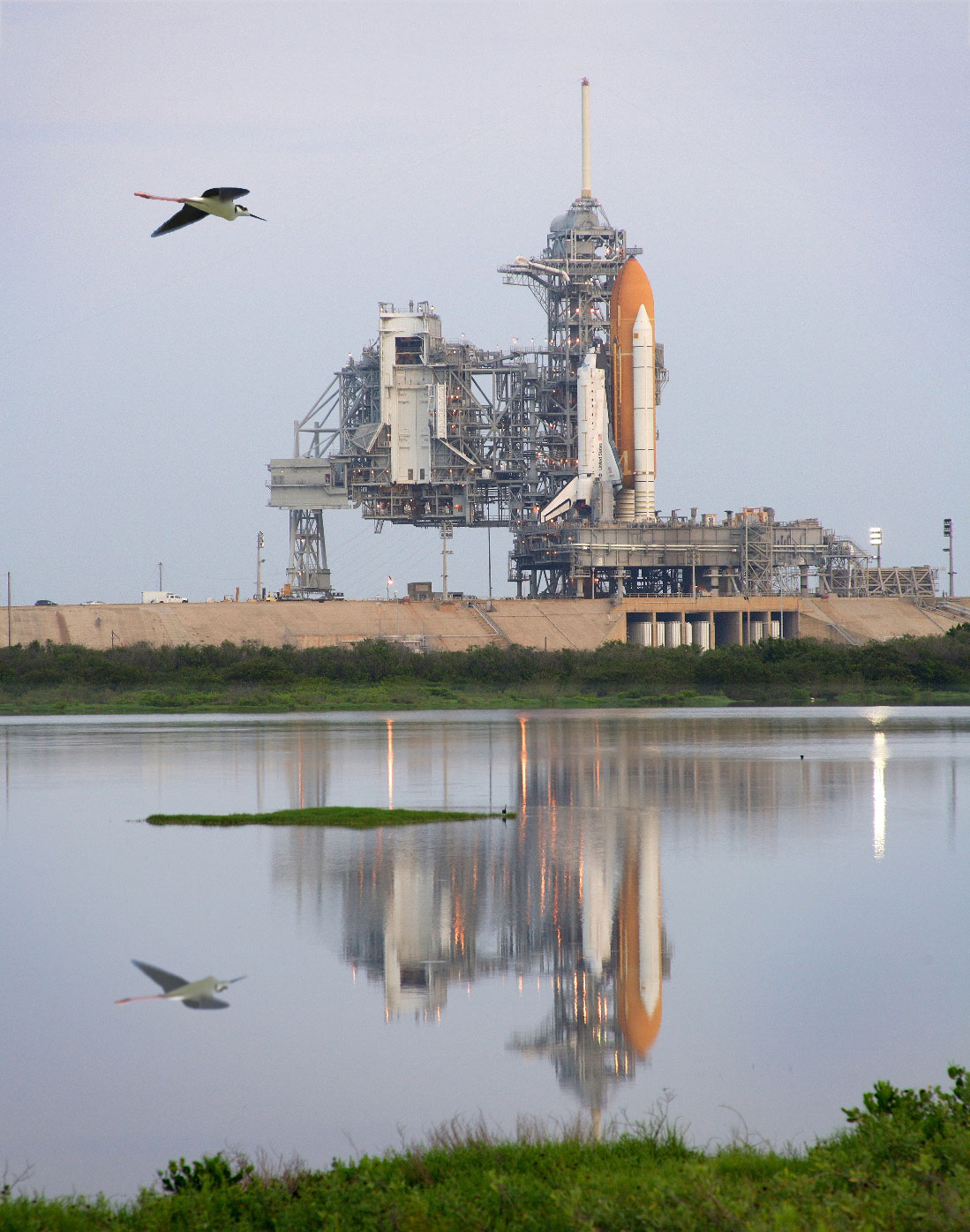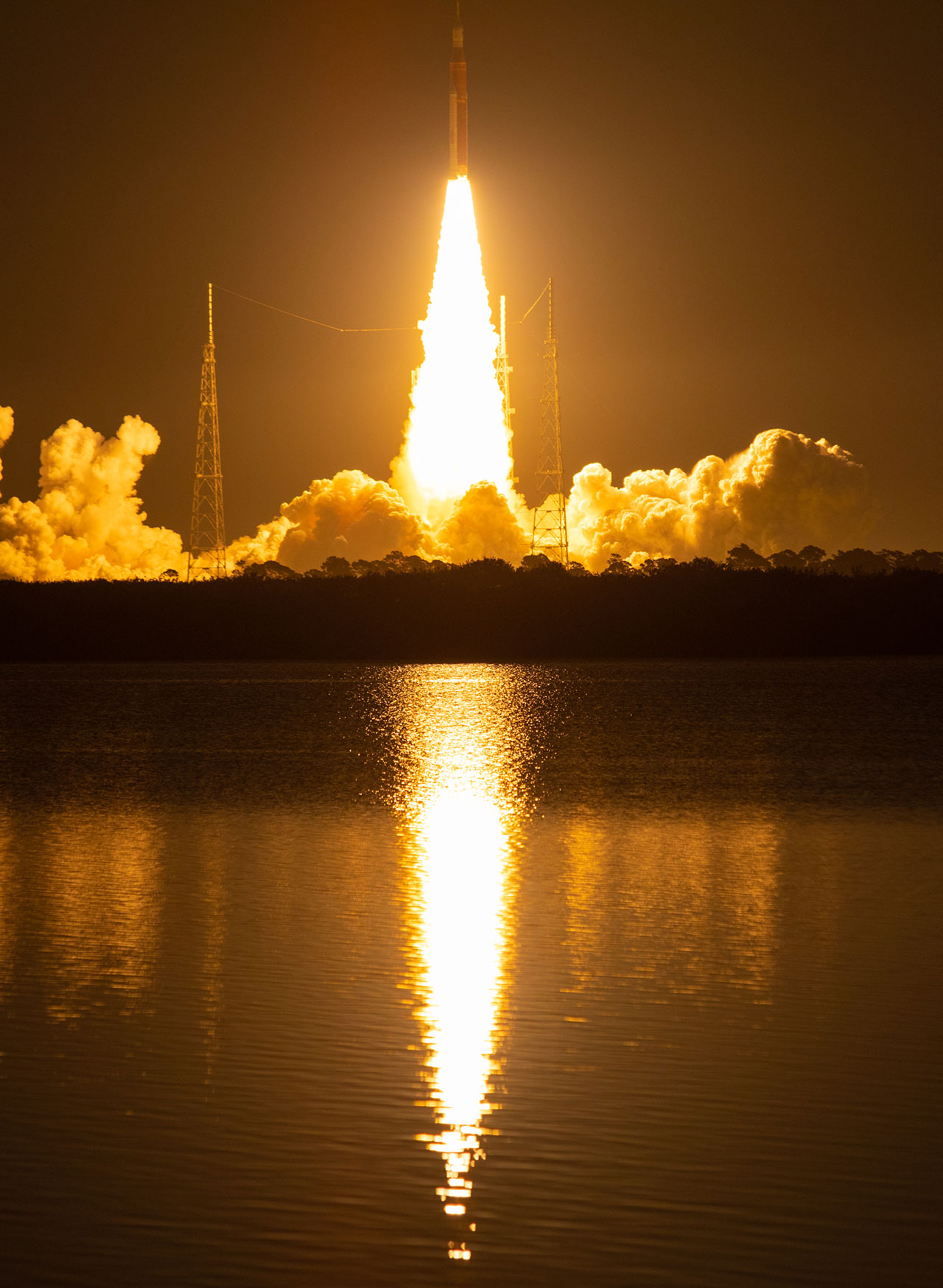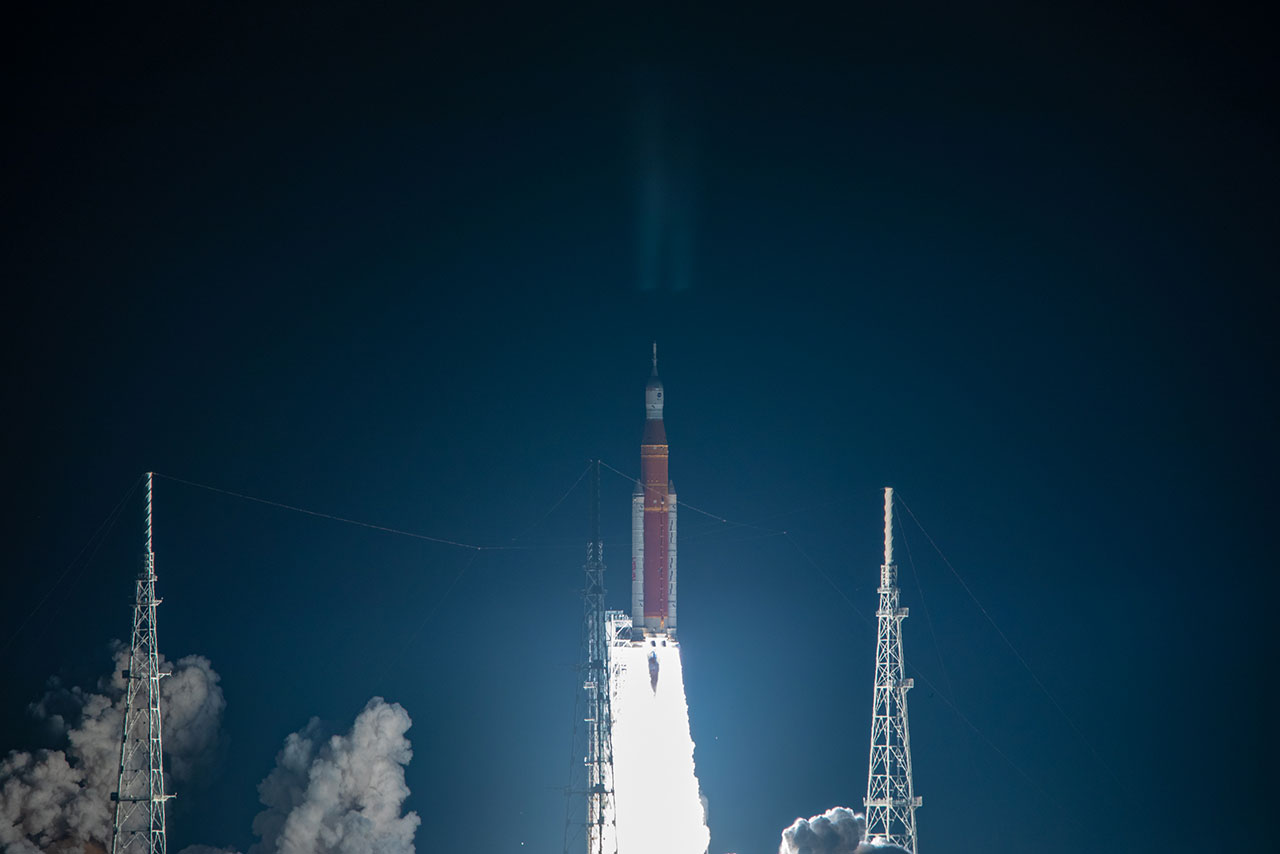Below, in their own words, Proferes and Grant share insight into their work — and tips for capturing a great photo.
What is the most interesting photo or subject you have photographed and why?
Proferes: There have been so many, but some of the most striking to me were photos of the space shuttle on the pad at sunrise with the Rotating Service Structure rolled back. The bright white xenon lights of the vehicle cast against the brilliant warm glow of the morning sky is just breathtaking.
Grant: I have always enjoyed taking long exposures of night launches. Being able to capture the arch that a vehicle takes from start of engines to apogee has always been awe inspiring to me.
What is the most difficult photo you’ve taken?
Proferes: I have taken flash photography, shooting down the open propellant grain throat of a shuttle solid rocket booster BSM (Booster Separation Motor) inside an explosives bunker. That was interesting.
Grant: Some of the most difficult photos I’ve had to take involve being inside the spacecraft doing final connector mates. Some are extremely hard to mate, much less being able to photograph. The high-resolution camera I use is absolutely the weapon of choice for clarity and image quality, but sometimes carrying a large camera/lens package comes with limits. I often find myself utilizing mirrors and different lighting to capture the subject.
What is the key to taking the perfect photo?
Proferes: There are a few things. Camera settings. Having the correct ISO (CMOS sensor sensitivity setting), F-Stop (depth of focus), shutter speed and focus. All of these have to be set in just in the right balance. Then there is composition and balance. Finally, it is dropping the shutter at just the right moment.
Grant: There is no one key to the perfect photo. Whenever you can, take a lot of practice shots to make sure you are using the proper settings. Otherwise your only attempt at the perfect shot might not be so perfect. I remember practicing for two days to take night shots of a launch on Roi-Namur in the Kwajalein Atoll in the Marshall Islands in 2013 as a contractor for NASA.
Any advice on capturing launches?
Proferes: First, day or night, the camera exposure should be set for a sunny day (ISO200 at F-16), as the plume of the rocket engines is very bright. For a night launch, put your camera on a tripod with setting for bright sunlight, place the shutter on bulb (open as long as you hold down the button). Press the shutter open and hold it from launch until the vehicle is well down range (60 to 90 seconds). The photo will show the arch of the rocket’s path. Very cool photo instead of just a bright ball of light in the night.
Grant: Practice, practice, practice. Think of the shot you want to produce and go for it. It may not happen on the first try, but you will have more attempts with future launches.
By Deborah Circelli
For more Starliner highlights, follow @BoeingSpace on X, formerly known as Twitter, starlinerupdates.com and the CFT mission website.
